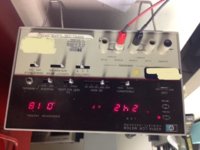cbuckle
XS650 Enthusiast
Hello, I checked my condenser and it is measuring 262nF and 264nF to ground (off of the black lead to ground cable [completely isolated] but I continue to get arcing at the points on my 74 650xs. I also get infinity ohms when measuring the resistance(a good thing). It is the first time the bike has run now in 30 years. I have read that this arcing is most likely due to a bad condenser. Can someone please tell me what value I should have on these condensers/ capacitors? I have access to spare electronics parts and was thinking of putting two 470nF capacitors back to back (making my own condenser)... any thoughts? my point gap is ~ .014"
thanks
thanks

